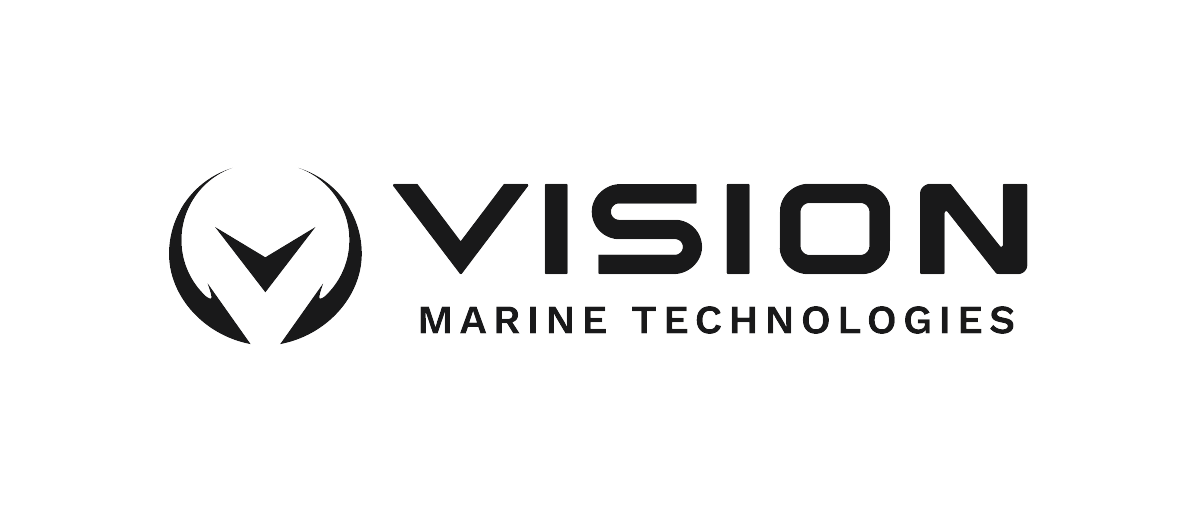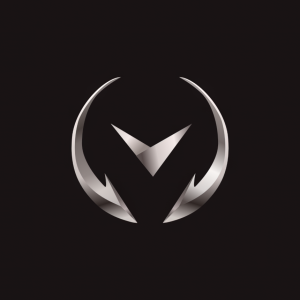Vision Marine Technologies Files Patent Application for Distributed Control System Architecture in Electric Marine Vessels
Vision Marine Technologies (Nasdaq: VMAR) has filed a new patent application with the USPTO for a Distributed Control System Architecture designed for their E-Motion™ High Voltage Electric Marine Powertrain. The innovation replaces traditional wiring systems with a streamlined architecture using a Control Area Network (CAN) bus.
The system enables efficient communication between the Vessel Control Unit and key powertrain components, including high-voltage batteries, power distribution units, and electric motors. The technology aims to reduce wiring complexity, optimize power distribution, and improve system responsiveness through decentralized control.
Key benefits include reduced vessel weight, simplified maintenance, and increased compatibility across various electric marine applications. The development is part of Vision Marine's strategy to advance sustainable boating technology and address industry challenges in electric propulsion.
Vision Marine Technologies (Nasdaq: VMAR) ha presentato una nuova domanda di brevetto presso l'USPTO per un'Architettura di Sistema di Controllo Distribuito progettata per il loro E-Motion™ Powertrain Marino Elettrico ad Alta Tensione. L'innovazione sostituisce i tradizionali sistemi di cablaggio con un'architettura semplificata utilizzando un bus di Rete di Controllo (CAN).
Il sistema consente una comunicazione efficiente tra l'Unità di Controllo della Nave e i principali componenti del powertrain, inclusi le batterie ad alta tensione, le unità di distribuzione dell'energia e i motori elettrici. La tecnologia mira a ridurre la complessità del cablaggio, ottimizzare la distribuzione dell'energia e migliorare la reattività del sistema attraverso un controllo decentralizzato.
I principali vantaggi includono una riduzione del peso della nave, una manutenzione semplificata e una maggiore compatibilità tra varie applicazioni marine elettriche. Lo sviluppo fa parte della strategia di Vision Marine per promuovere la tecnologia marina sostenibile e affrontare le sfide del settore nella propulsione elettrica.
Vision Marine Technologies (Nasdaq: VMAR) ha presentado una nueva solicitud de patente ante la USPTO para una Arquitectura de Sistema de Control Distribuido diseñada para su Powertrain Marino Eléctrico de Alta Tensión E-Motion™. La innovación sustituye los sistemas de cableado tradicionales por una arquitectura optimizada que utiliza un bus de Red de Control (CAN).
El sistema permite una comunicación eficiente entre la Unidad de Control de la Embarcación y los componentes clave del powertrain, incluidas las baterías de alta tensión, las unidades de distribución de energía y los motores eléctricos. La tecnología busca reducir la complejidad del cableado, optimizar la distribución de energía y mejorar la capacidad de respuesta del sistema mediante un control descentralizado.
Los principales beneficios incluyen una reducción del peso de la embarcación, un mantenimiento simplificado y una mayor compatibilidad con diversas aplicaciones marinas eléctricas. El desarrollo es parte de la estrategia de Vision Marine para avanzar en la tecnología de navegación sostenible y abordar los desafíos de la industria en la propulsión eléctrica.
비전 마린 테크놀로지 (Nasdaq: VMAR)는 E-Motion™ 고전압 전기 해양 파워트레인을 위해 설계된 분산제어시스템 아키텍처에 대한 새로운 특허를 USPTO에 출원했습니다. 이 혁신은 전통적인 배선 시스템을 제어 지역 네트워크(CAN) 버스를 사용하는 간소화된 아키텍처로 대체합니다.
이 시스템은 선박 제어 장치와 고전압 배터리, 전력 분배 장치, 전기 모터 등 핵심 파워트레인 구성 요소 간의 효율적인 통신을 가능하게 합니다. 이 기술은 배선 복잡성 감소, 전력 분배 최적화, 시스템 반응성 향상을 목표로 합니다.
주요 이점으로는 선박의 무게 감소, 유지 관리 간소화, 다양한 전기 해양 응용 프로그램 간 호환성 증가가 포함됩니다. 이 개발은 비전 마린의 지속 가능한 보트 기술 발전 전략의 일환으로, 전기 추진 분야의 산업 도전 과제를 해결하기 위한 것입니다.
Vision Marine Technologies (Nasdaq: VMAR) a déposé une nouvelle demande de brevet auprès de l'USPTO pour une architecture de système de contrôle distribué conçue pour leur système de propulsion marine électrique haute tension E-Motion™. L'innovation remplace les systèmes de câblage traditionnels par une architecture simplifiée utilisant un réseau de contrôle (CAN).
Ce système permet une communication efficace entre l'unité de contrôle du navire et les composants clés du groupe motopropulseur, y compris les batteries haute tension, les unités de distribution d'énergie et les moteurs électriques. La technologie vise à réduire la complexité du câblage, optimiser la distribution d'énergie et améliorer la réactivité du système grâce à un contrôle décentralisé.
Les principaux avantages incluent une réduction du poids du navire, une maintenance simplifiée et une compatibilité accrue avec diverses applications maritimes électriques. Ce développement s'inscrit dans la stratégie de Vision Marine visant à promouvoir une technologie nautique durable et à relever les défis de l'industrie en matière de propulsion électrique.
Vision Marine Technologies (Nasdaq: VMAR) hat einen neuen Patentantrag beim USPTO für eine verteilte Steuerungssystemarchitektur eingereicht, die für ihren E-Motion™ Hochvolt-Elektroantrieb entwickelt wurde. Die Innovation ersetzt herkömmliche Verkabelungssysteme durch eine optimierte Architektur, die ein Steuerbereichsnetzwerk (CAN) verwendet.
Das System ermöglicht eine effiziente Kommunikation zwischen der Bootskontrolleinheit und den wichtigsten Komponenten des Antriebsstrangs, einschließlich Hochvolt-Batterien, Energieverteilungseinheiten und Elektromotoren. Die Technologie zielt darauf ab, die Verkabelungskomplexität zu reduzieren, die Energieverteilung zu optimieren und die Reaktionsfähigkeit des Systems zu verbessern durch dezentrale Steuerung.
Zu den wichtigsten Vorteilen gehören eine Verringerung des Schiffgewichts, vereinfachte Wartung und erhöhte Kompatibilität mit verschiedenen elektrischen maritimen Anwendungen. Die Entwicklung ist Teil der Strategie von Vision Marine zur Förderung nachhaltiger Bootstechnologie und zur Bewältigung der Herausforderungen der Branche bei der elektrischen Antriebstechnik.
- Filed new patent application for advanced control system architecture
- Technology reduces vessel weight and maintenance complexity
- Innovation improves system scalability and compatibility
- None.
Insights
This patent filing represents a pivotal technological breakthrough that could significantly strengthen Vision Marine's market position in the electric marine propulsion sector. The new distributed control system architecture addresses three critical challenges in electric boat manufacturing:
1. Cost Reduction & Efficiency: By replacing complex wiring systems with a streamlined CAN bus architecture, manufacturing costs could decrease substantially while improving reliability. Traditional marine electrical systems often require extensive wiring harnesses that are expensive to produce and maintain. The new architecture could reduce both material costs and assembly time.
2. Scalability & Market Expansion: The modular nature of the distributed control system makes it adaptable to various vessel sizes and types. This versatility is particularly valuable as it allows Vision Marine to:
- Target larger vessels with higher power requirements
- Expand into new market segments with minimal redesign costs
- Offer standardized components across different models, improving manufacturing efficiency
3. Competitive Moat: The patent, if granted, would create significant barriers to entry for competitors. The architecture's ability to optimize power distribution and improve system responsiveness could become an industry standard, potentially leading to licensing opportunities or strategic partnerships.
While the immediate financial impact may be , this technological advancement positions Vision Marine as an innovator in the marine electrification space. The real value lies in the potential for reduced production costs, improved product reliability and the ability to scale their technology across different vessel sizes and types.
Enhancing Efficiency, Scalability, and Performance in High-Voltage Electric Powertrains
MONTREAL, QC / ACCESS Newswire / February 6, 2025 / Vision Marine Technologies Inc. (the "Company," "Vision Marine," "we," "us," "our") (Nasdaq:VMAR) is pleased to announce the filing of its latest patent application with the United States Patent and Trademark Office. This application is part of an ongoing series of patents designed to advance the E-Motion™ High Voltage Electric Marine Powertrain. The newly developed Distributed Control System Architecture aims to simplify system integration, enhance scalability, and improve operational efficiency in electric marine vessels.
logo
"Developing an efficient and scalable control system is critical for the future of high-voltage electric propulsion," said Xavier Montagne, Chief Technology Officer at Vision Marine. "This patent application represents a key step in optimizing how powertrain components communicate and function as a cohesive system, reducing system complexity while increasing reliability and performance for electric marine vessels."
The patented technology introduces a distributed control system that replaces traditional wiring-heavy configurations with a streamlined architecture utilizing a Control Area Network (CAN) bus. This system enables seamless communication between the Vessel Control Unit (VCU) and critical powertrain components, including high-voltage (HV) batteries, power distribution units (PDU), and electric motors. By decentralizing control through dedicated component controllers, Vision Marine aims to reduce wiring complexity, optimize power distribution, and improve overall system responsiveness.
The introduction of this architecture provides multiple benefits, including reduced vessel weight, simplified maintenance, and increased compatibility with a wide range of electric marine applications. As electric propulsion technology continues to evolve, ensuring efficient and scalable power management will play a crucial role in supporting larger vessels, extending travel distances, and improving overall system durability.
As electric propulsion becomes the future of the marine industry, Vision Marine's innovation is paving the way for a new era of sustainable and reliable boating. By focusing on creating scalable, data-driven, and advanced technology solutions, the Company is addressing the industry's most pressing challenges while supporting the transition to electric-powered marine vessels.
About Vision Marine Technologies Inc.
Vision Marine Technologies, Inc. (NASDAQ: VMAR) is driving the shift to sustainable, electric-powered recreational boating with its E-Motion™ outboard powertrain system. Combining advanced battery technology, high-efficiency motors, proprietary software, and innovative assembly techniques, Vision Marine delivers efficient and high-performing solutions for the marine industry.
Forward-Looking Statement
This press release contains forward-looking statements within the safe harbor provisions of the Private Securities Litigation Reform Act of 1995. These statements involve risks, uncertainties, and other factors that may cause actual results to differ materially. For a detailed discussion of these risks, refer to Vision Marine's Annual Report on Form 20-F for the year ended August 31, 2024, and other periodic filings with the SEC. Vision Marine does not undertake any obligation to update or revise forward-looking statements other than as required by law.
Investor and Company Contact:
Vision Marine Technologies
Bruce Nurse
(303) 919-2913
bn@v-mti.com
Website: visionmarinetechnologies.com
Twitter: @marine_vision
Facebook: @VisionMarineTechnologies
Instagram: @visionmarine.technologies
YouTube: @VisionMarineTechnologies
SOURCE: Vision Marine Technologies
View the original press release on ACCESS Newswire







